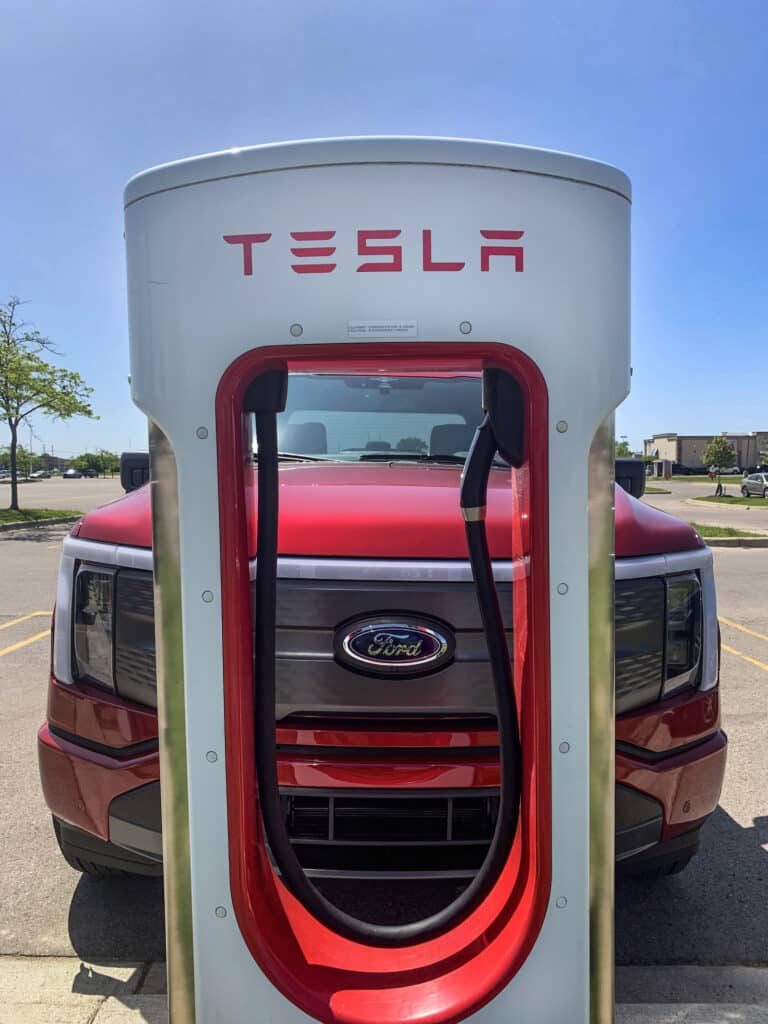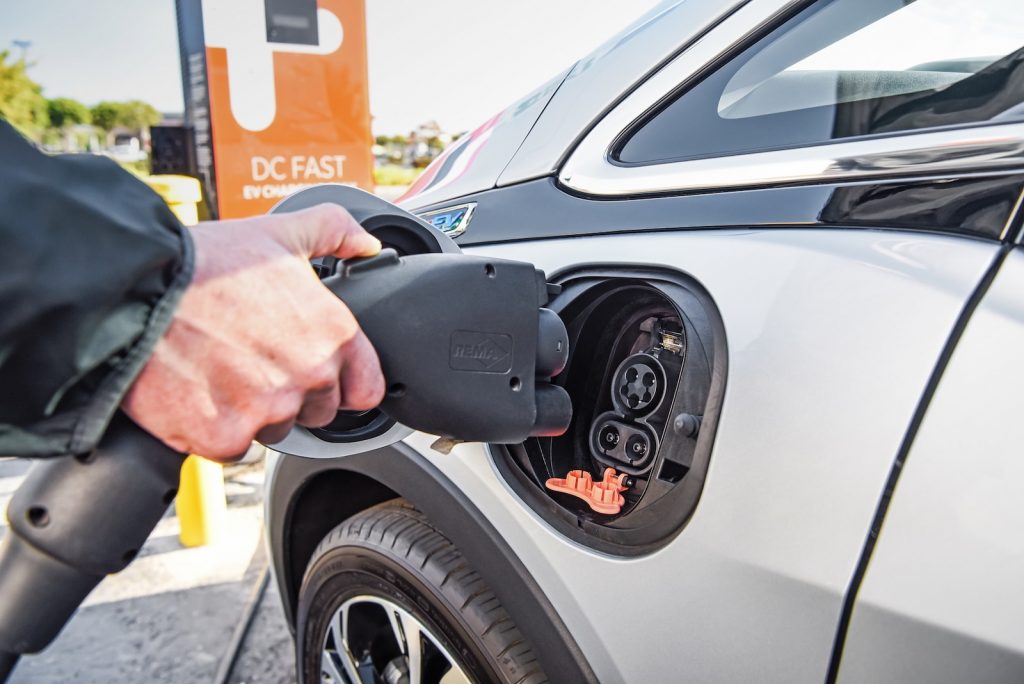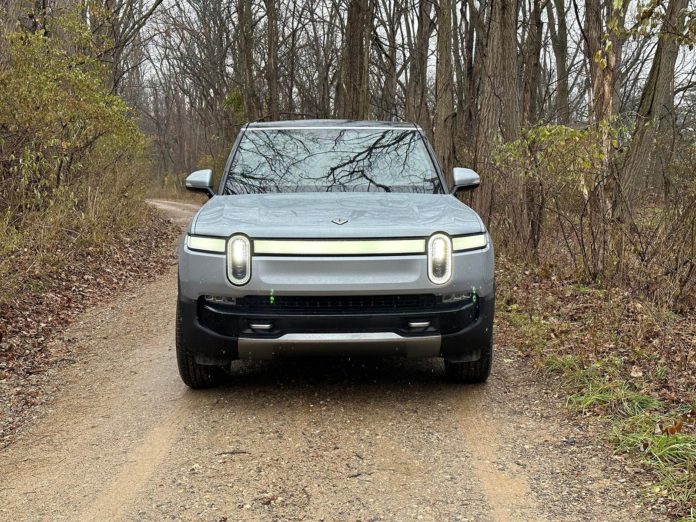Tesla’s North American Charging Standard (NACS) will be adopted by electric vehicle manufacturer Rivian, giving Rivian R1T and R1S customers access to Tesla’s U.S. and Canada charging network and bolstering Tesla’s effort to establish the industry standard.
“The adoption of the North American Charging Standard will enable our existing and future customers to leverage Tesla’s expansive Supercharger network while we continue to build out our Rivian Adventure Network,” said Rivian CEO R.J. Scaringe, in a statement.
As early as the spring of 2024, according to Rivian, its customers will have access to 12,000 of 17,000 Tesla Superchargers in the United States and Canada using adapters. Starting in 2025, Rivian will make Tesla charging outlets standard on its R1 vehicles, as well as its upcoming R2 platform even though the company already has a limited network of fast chargers, which the company continues to expand.
“We look forward to welcoming Rivian owners to thousands of our Superchargers across North America,” said Rebecca Tinucci, Tesla’s senior director of Charging Infrastructure on Tuesday. “It’s great to see the industry coming together to adopt the North American Charging Standard. By doing so, we’re collectively ensuring all EV drivers have access to easy to use, reliable charging hardware.”
Jumping on the bandwagon
It’s easy to see why other OEMs are looking to use NACS. According to the U.S. Department of Energy, Tesla’s Superchargers make up around 60% of all fast chargers in the country.
That’s why Rivian isn’t alone.

Santa Ana, California-based EV Charging Systems Manufacturer BTC Power also said on Tuesday that it would add Tesla’s NACS charger to its starting next year. Privately held BTC supplies chargers to Amazon, Electrify America, Ford, 7-Eleven and many fleet operators.
“As one of the first and oldest charger manufacturers in the US, it has been critical to lead market innovations,” said Frank Meza, CEO of BTC Power, which was founded in 1999. “By including the NACS connector to our chargers we can eliminate the need for unreliable and unpredictable adaptors that are being utilized by drivers using our equipment.”
The move follows similar recent actions by Zurich, Switzerland-based ABB E-mobility; Murarrie, Australia-based Tritium Charging; Seoul, South Korea-based SK Signet; and Oakland, California-based FreeWire.
The state of Texas also said on Tuesday that in order to participate in a state program to electrify roadways using federal funds, EV charging companies would have to supply both Tesla’s NACS standard as well as the CCS standard.
Not one to be left out, Hyundai Motor Group stated Tuesday that it will take Tesla’s standard into consideration when designing its future vehicles. But the automaker is concerned that Hyundai’s electric vehicles can’t be charged as quickly on Tesla’s present Supercharger network as they can be on other outlets. Tesla’s Superchargers operate at a lower voltage than Hyundai’s new EVs, such as the Ioniq 5, which use an 800-volt electrical architecture that provide faster charging.
Detroit signs on
The trio of announcements are only increasing momentum for Tesla’s ambition to dominate EV charging just as it dominates the EV industry. And it appears to have the impetus thanks to Ford and General Motors.

American automakers are seeking to make NACS the industry charging standard in the face of competing technologies, including the CCS standard many currently use, although Japanese automakers such as Toyota and Nissan have pushed the competing CHAdeMo standard.
In late May, Ford announced its EV owners will be able to purchase an adaptor allowing them to connect to the unique plug used by Tesla’s NACS network. Starting in 2025, however, Ford will equip its vehicles with the port used by Tesla, switching from the Combined Charging System (CCS) connector it currently uses. Ford CEO John Lawler noted Ford’s investment in its deal with Tesla is negligible, but it offers considerable benefit to the company’s EV customers in the future.
General Motors followed Ford’s move two weeks later, and will use the same strategy as Ford, initially offering adapters before making the NACS port standard on its 2025 EVs.
Detroit’s adaption of the NACS system caused CCS network operators EVgo and Chargepoint to announce their intention to add NACS to their networks to avoid losing out on millions in dollars of revenue.
Musk keeps his promise
All of this follows Tesla’s promise in February to open up at least 7,500 of its Superchargers to non-Tesla battery-electric vehicles as part of a deal with the Biden administration. All EV drivers will be able to access these stations using the Tesla app or website.
Due to the relatively low number of EVs produced by automakers other than Tesla now in use, installing and maintaining a network of chargers involves significant investment with limited or no returns. But while consumers’ concerns about being stranded are a major roadblock to EV consideration, most automakers have not invested in establishing their own networks, unlike Tesla.

